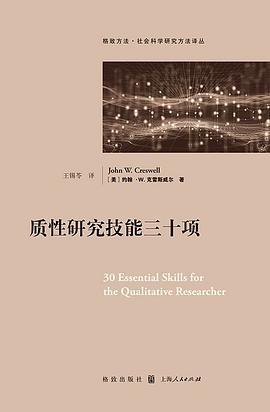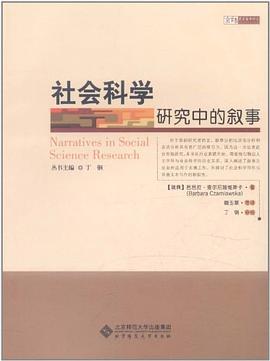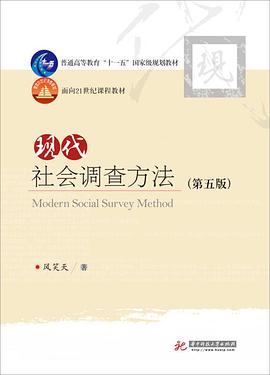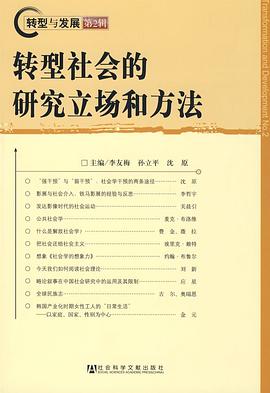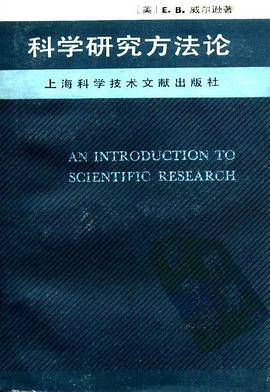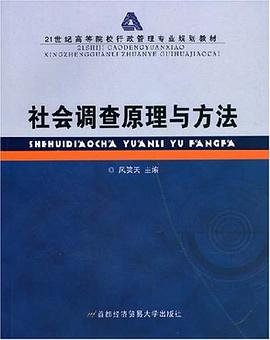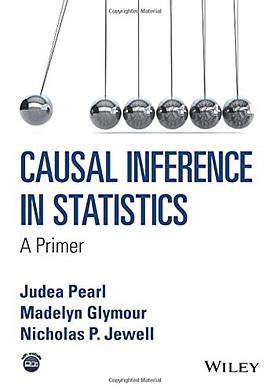
Causal Inference in Statistics pdf epub mobi txt 電子書 下載2025
- 因果推理
- statistics
- 研究方法
- 因果推斷
- Causality
- 計算機科學
- 統計學
- 數學
- 因果推斷
- 統計學
- 數據分析
- 機器學習
- 社會科學
- 實驗設計
- 迴歸分析
- 變量關係
- 預測模型
- 數據科學

具體描述
Causality is central to the understanding and use of data. Without an understanding of cause effect relationships, we cannot use data to answer questions as basic as, “Does this treatment harm or help patients?” But though hundreds of introductory texts are available on statistical methods of data analysis, until now, no beginner-level book has been written about the exploding arsenal of methods that can tease causal information from data.
Causal Inference in Statistics fills that gap. Using simple examples and plain language, the book lays out how to define causal parameters; the assumptions necessary to estimate causal parameters in a variety of situations; how to express those assumptions mathematically; whether those assumptions have testable implications; how to predict the effects of interventions; and how to reason counterfactually. These are the foundational tools that any student of statistics needs to acquire in order to use statistical methods to answer causal questions of interest.
This book is accessible to anyone with an interest in interpreting data, from undergraduates, professors, researchers, or to the interested layperson. Examples are drawn from a wide variety of fields, including medicine, public policy, and law; a brief introduction to probability and statistics is provided for the uninitiated; and each chapter comes with study questions to reinforce the readers understanding.
著者簡介
圖書目錄
1 Preliminaries: Statistical and Causal Models 1
1.1 Why Study Causation 1
1.2 Simpson’s Paradox 2
1.3 Probability and Statistics 9
1.3.1 Variables 10
1.3.2 Events 11
1.3.3 Conditional probability 11
1.3.4 Independence 13
1.3.5 Probability distributions 14
1.3.6 The law of total probability 15
1.3.7 Using Bayes’ rule 18
1.3.8 Expected values 22
1.3.9 Variance and covariance 24
1.3.10 Regression 27
1.3.11 Multiple regression 31
1.4 Graphs 33
1.5 Structural Causal Models 36
1.5.1 Modeling causal assumptions 36
1.5.2 Product decomposition 40
2 Graphical Models and Their Applications 47
2.1 Connecting Models to Data 47
2.2 Chains and Forks 48
2.3 Colliders 55
2.4 ��-Separation 62
2.5 Model Testing and Causal Search 66
3 The Effects of Interventions 71
3.1 Interventions 71
3.2 The Adjustment Formula 74
3.2.1 To adjust or not to adjust? 79
3.2.2 Multiple interventions and the truncated product rule 81
3.3 The Back-Door Criterion 82
3.4 The Front-Door Criterion 89
3.5 Conditional Interventions and Covariate-Specific Effects 95
3.6 Inverse Probability Weighing 98
3.7 Mediation 103
3.8 Causal Inference in Linear Systems 107
3.8.1 Structural vs. regression coefficients 110
3.8.2 The causal interpretation of structural coefficients 111
3.8.3 Identifying structural coefficients and causal effect 113
3.8.4 Mediation in linear systems 119
4 Counterfactuals and their Applications 123
4.1 Counterfactuals 123
4.2 Defining and Computing Counterfactuals 126
4.2.1 The structural interpretation of counterfactuals 126
4.2.2 The fundamental law of counterfactuals 130
4.2.3 From population data to individual behavior – an illustration 131
4.2.4 The three steps in computing counterfactuals 133
4.3 Non-Deterministic Counterfactuals 136
4.3.1 Probabilities of counterfactuals 136
4.3.2 The Graphical representation of counterfactuals 141
4.3.3 Counterfactuals in experimental settings 144
4.3.4 Counterfactuals in linear models 147
4.4 Practical uses of counterfactuals 149
4.4.1 Recruitment to a program 149
4.4.2 Additive interventions 152
4.4.3 Personal decision making 155
4.4.4 Sex discrimination in hiring 158
4.4.5 Mediation and path-disabling interventions 159
4.5 Mathematical Tool Kits for Attribution and Mediation 161
4.5.1 A tool kit for attribution and probabilities of causation 162
4.5.2 A tool kit for mediation 167
References 176
· · · · · · (收起)
讀後感
評分
評分
評分
評分
用戶評價
三天看完。全書一共四章,前兩章比較基礎,介紹瞭所有CI最基本的理論部分。第三章intervention,第四章counterfactual是屬於比較深入的話題。這本書彌補瞭book of why裏的技術細節,所有的概念也經由數學語言嚴格化,解決瞭很多book of why裏泛泛而談造成的細節缺失。比如他講intervention那裏,hold X constant和conditional on X的區彆,自然語言解釋起來是非常囉嗦和低效的,看得我非常繞。這本書作為入門級教科書,省略瞭大多數證明細節。第四章技術難度最高,完全引入更深層次的數學細節,整體感覺有點潦草。完全沒有涉及和ML的結閤,感興趣的人恐怕隻能自己刷論文。希望causal analysis能有更好的發展。
评分用最簡單的數學,講最清晰的idea
评分三天看完。全書一共四章,前兩章比較基礎,介紹瞭所有CI最基本的理論部分。第三章intervention,第四章counterfactual是屬於比較深入的話題。這本書彌補瞭book of why裏的技術細節,所有的概念也經由數學語言嚴格化,解決瞭很多book of why裏泛泛而談造成的細節缺失。比如他講intervention那裏,hold X constant和conditional on X的區彆,自然語言解釋起來是非常囉嗦和低效的,看得我非常繞。這本書作為入門級教科書,省略瞭大多數證明細節。第四章技術難度最高,完全引入更深層次的數學細節,整體感覺有點潦草。完全沒有涉及和ML的結閤,感興趣的人恐怕隻能自己刷論文。希望causal analysis能有更好的發展。
评分因果推斷是貝葉斯模型的一種功能,目前判彆模型大行其道,可能不受推崇,但它是機器學習未來的發展方嚮。
评分內容太少太淺顯瞭,對不起博大的書名。
相關圖書
本站所有內容均為互聯網搜索引擎提供的公開搜索信息,本站不存儲任何數據與內容,任何內容與數據均與本站無關,如有需要請聯繫相關搜索引擎包括但不限於百度,google,bing,sogou 等
© 2025 book.quotespace.org All Rights Reserved. 小美書屋 版权所有




